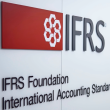The Australian Sustainable Finance Institute (ASFI) has released the country’s first sustainable finance taxonomy, a landmark development aimed at aligning financial flows with Australia’s net zero emissions goals.
The taxonomy provides a clear, science-based classification system for green and transition finance, tailored specifically to Australia’s economic and environmental landscape. It offers a voluntary framework for financial institutions and businesses to assess the credibility of environmental claims and direct investments towards activities that support the net zero transition.
ASFI CEO Kristy Graham described the launch as a “transformative moment” for Australia’s sustainable finance market and a key milestone under the government’s Sustainable Finance Roadmap.
“The 20-month development process has been rigorous and collaborative, reflecting deep technical input and extensive engagement across finance, industry and civil society,” Graham said. “To unlock global finance for Australia’s key green and transition sectors, the taxonomy had to be internationally credible and locally relevant.”
In a world-first, the taxonomy includes guidelines for sectors such as mining, minerals, and metals, and sets expectations for engagement with First Nations communities and cultural heritage management.
The taxonomy will be piloted over the coming months by major financial institutions, including ANZ, NAB, Westpac, Commonwealth Bank of Australia, CEFC, HESTA, Rest, Rabobank, and Moody’s Ratings. The pilot will evaluate how the taxonomy can be used in real-world investment decisions and inform future refinements.
Dr Guy Debelle, Co-Chair of the Taxonomy Technical Body, said the taxonomy provides a “clear, science-aligned guide” to support Australia’s green economic transformation by enhancing investor confidence and reducing uncertainty.
The Climate Bonds Initiative, a global authority on sustainable finance standards and a partner in the taxonomy’s development, has announced it will expand its Certification Scheme to incorporate criteria from the Australian framework.
“Australia’s Sustainable Finance Taxonomy is a shopping list of investments for the future,” said Sean Kidney, CEO and Co-Founder of Climate Bonds Initiative.
“Certification under both the Australian and Climate Bonds taxonomies will bolster investor confidence in the sustainability credentials of investments.”
Financial leaders have widely welcomed the taxonomy. CEFC CEO Ian Learmonth said the taxonomy would help international investors support Australia’s decarbonisation journey, while NAB’s Chief Climate Officer Jacqueline Fox described it as a “critical framework” for enabling green finance in the energy transition.
ANZ’s Global Head of Sustainable Finance Katharine Tapley called the taxonomy the result of “four years of collaboration and thoughtful leadership,” and Westpac’s Chief Sustainability Officer Fiona Wild said it would support efforts to mobilise capital for Australia’s net zero ambitions.
Superannuation funds such as HESTA and Rest also backed the initiative, emphasising the taxonomy’s potential to inform sustainable investment strategies that deliver long-term value to members.
ASFI said it will continue working with regulators, financial institutions, and industry bodies to embed the taxonomy into Australia’s financial architecture.





















